“Nuclear missiles” is a term that has become ubiquitous in headlines covering North Korean news over the past several years. Most people may simply chalk Kim Jong Un’s obsession with nukes to his distrust of other world leaders and the general madness the entire Kim regime projects. But what drives Kim to incessantly up the nuclear ante almost 70 years after the end of the Korean War? A look at the history of the Korean peninsula tells a story of a nation divided while fighting against outside reign and with two outcomes that couldn’t be more different.
Japanese soldiers landing at Yeongjong Island in Korea.
History of the North and South
Japan’s colonial rule of the Korean Peninsula ended with the victory of Allied forces in World War II Four countries (US and the Soviet Union, the UK and China) agreed to divide Korea at the 38th parallel and accept Japanese surrender on both sides. Korea was to remain under this Four-Power Trusteeship for up to five years while a system of autonomous rule was established for a unified Korea. After several years of failed discussions between the US and the Soviet Union, two separate governments came into existence in the north and south in 1948.
The northern region (present-day North Korea) established a communist government, backed by Joseph Stalin and the Soviet Union while the southern region (South Korea) established a democratic government with US support and with the UN closely monitoring. With the backing of two global superpowers, the two states started to operate independently. This short period that split the nation laid the foundation of anti-US sentiments in communist North Korea.
The Korean War
Just five short years after the end of World War II, the relationship between the two Koreas deteriorated further when the North invaded South Korea in 1950 (the beginning of the Korean War), which triggered a US retaliation within days. The United States sent about 90% of the troops that were sent to aid South Korea while China fought on the side of North Korea, with the Soviet Union providing military equipment.
After three years of a bloody war that cost over a million lives on both sides, fighting ceased on July 27, 1953, with the signing of an armistice agreement between Democratic People’s Republic of Korea, Chinese People’s Volunteers and the UN. It also drew the demilitarized zone (DMZ) across the 38th parallel, which has come to be known as the most dangerous border in the world. No peace agreement has been signed as the two countries are technically still at war.
US Military presence
The United States has had a military presence in South Korean since the Korean War. According to the International Institute for Strategic Studies (IISS), present day South Korea has the third highest deployment of US troops anywhere in the world. Additionally, neighboring Japan is host to more US forces than any other nation, with over 47,000 deployed, the majority being naval personnel, and an aircraft carrier permanently deployed to Yokosuka, Japan.
In 2017, following North Korea’s missile tests near US bases in Japan, the US installed its controversial Terminal High Altitude Area Defense (THAAD) missile defence system at Seongju in South Korea. The THAAD in South Korea is operated by the US army and is a transportable, ground-based missile defense system which could shoot down North Korean short and medium range missiles in the event of war.
“American Imperialism”
North Korea teaches its citizens that the United States started the Korean War -- and only the Kim family can protect them against the US. North Korea views the US as an imperialist and capitalist colonizer with a long history of exploitation and has reinforced this by way of censorship, control of access to information, and anti-US propaganda.
Fast forward to present day, South Korea’s economic prosperity has brought this once war-torn country within reach to be the world’s seventh greatest in income per capita and with potential to join the G7 in 2021. All the while, just north of the DMZ, sanctions brought on by Kim Jong Un’s incessant nuclear threats and a global COVID-19 pandemic has global watchdogs concerned about a repeat of the devastating famine of the 1990s. Yet, due to North Korea’s extensive brain-washing and control over information and media, those on the inside are clueless to this massive disparity.
For the North Korean regime, America is to be blamed for the Korean War and all of the aftermath. The anti-American narrative is inescapable and indoctrination begins as early as kindergarten. Through it, Kim Jong Un is able to justify billions in nuclear weapons to protect his dictatorship against this American “bogeyman” while his people starve and his nation remains trapped in the past. Sadly, this kernel of hate still drives Kim’s nuclear ambitions today.
In the second part of this series, we will explore North Korea’s recent development of its nuclear arsenal and the toll that it has taken on the struggling nation.






